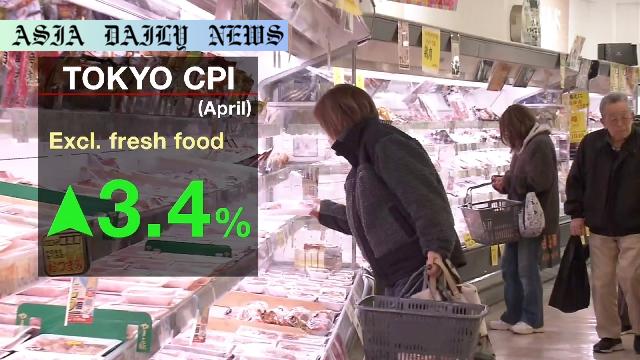Inflation: Tokyo’s consumer inflation reaches a two-year high, driven by surging rice costs and rising energy prices.
Tokyo’s inflation soared to its highest in two years at 3.4%, primarily driven by surging rice prices.
Rice prices rose 93.8%, marking the largest increase since 1971, impacting everyday staples like onigiri and sushi.
Energy prices rose due to reduced government subsidies, with households paying 13.1% more for electricity.
Tokyo’s CPI acts as a leading indicator for Japan’s nationwide inflation figures.

Surging Inflation: A Two-Year High in Tokyo
Tokyo’s consumer inflation in April has hit a two-year high, alarming residents and policymakers alike. The preliminary Consumer Price Index (CPI) for Tokyo rose by 3.4% over the past year, demonstrating strong inflationary pressures that have made essential goods and living expenses more costly. This marks a sharp jump from March’s inflation rate, driven significantly by an unprecedented rise in the cost of rice. These figures, released by Japan’s Internal Affairs Ministry, exclude fresh food but consider other categories that directly affect daily life, such as energy and processed foods.
Record-High Rice Prices and Broader Impacts
The standout contributor to this surge is the spike in rice prices, which soared by an astounding 93.8%. This is the sharpest increase since comparable records began in 1971 and marks the seventh consecutive month of unprecedented price hikes for the staple crop. The ripple effects of this surge are being felt across various products made from rice. For example, onigiri rice balls witnessed a price increase of 15.8%, while sushi prices at restaurants rose by 8.3%. These increases directly impact the daily spending and eating habits of Tokyo residents, with rice being a cornerstone of Japanese cuisine and culture.
Bird Flu and Rising Energy Costs Compound the Problem
While rice prices dominate headlines, other essential items have also seen significant inflation. Bird flu outbreaks across Japan have resulted in a 7.1% hike in egg prices, adding to the food price woes. Additionally, energy costs have climbed steeply, with households paying 13.1% more for electricity, largely due to the reduction in government subsidies. City gas prices also increased by 4.8%, compounding the financial burden on already cash-strapped households.
Tokyo’s CPI: A National Indicator
Tokyo’s consumer price index serves as a bellwether for nationwide inflation trends. The significance of these figures can’t be understated, as they provide a glimpse into Japan’s broader economic challenges. As the nation awaits the release of its Consumer Price Index on May 23, the Tokyo data underscores the urgent need for policy interventions to address inflationary pressures and their toll on consumers.
Commentary
The Real Cost of Rising Inflation
The news of Tokyo’s inflation hitting a two-year high is a stark reminder of the interconnected forces that drive economic challenges. At first glance, a 3.4% rise may seem like a moderate figure, but when broken down into its most basic components, the realities facing Tokyo residents become alarmingly clear. A nearly 94% increase in rice prices is more than a statistic; it’s a direct disruption to the meals, culture, and traditions that hinge on this staple crop. Beyond rice, the ripple effects on onigiri and sushi prices indicate how inflation can permeate even the smallest of expenditures, affecting consumer habits and quality of life.
Key Contributing Factors: Unseen Yet Profound
What truly compounds this issue is how multiple factors like bird flu outbreaks and dwindling government energy subsidies extend and intensify the financial pressures on households. The jump in energy costs is another painful reminder of how global and regional factors converge to make everyday life unaffordable for the average citizen. For many Tokyo families, the increased cost of basic necessities like electricity and food further underscores the delicate balance between stagnant wages and rising living costs. Policymakers must navigate these challenges with foresight and a keen understanding of their far-reaching implications.
Policy Considerations and Future Challenges
This rising inflation levels a loud call for more effective policy interventions. Whether through increased subsidies or innovative support programs for essential goods, decisive action is needed to alleviate the burden on consumers. Tokyo acts as a microcosm for Japan’s broader economic landscape, and the figures here serve as a cautionary tale. Without prompt action, the pressure on ordinary families could worsen, leading to long-term financial and social consequences across the nation.


